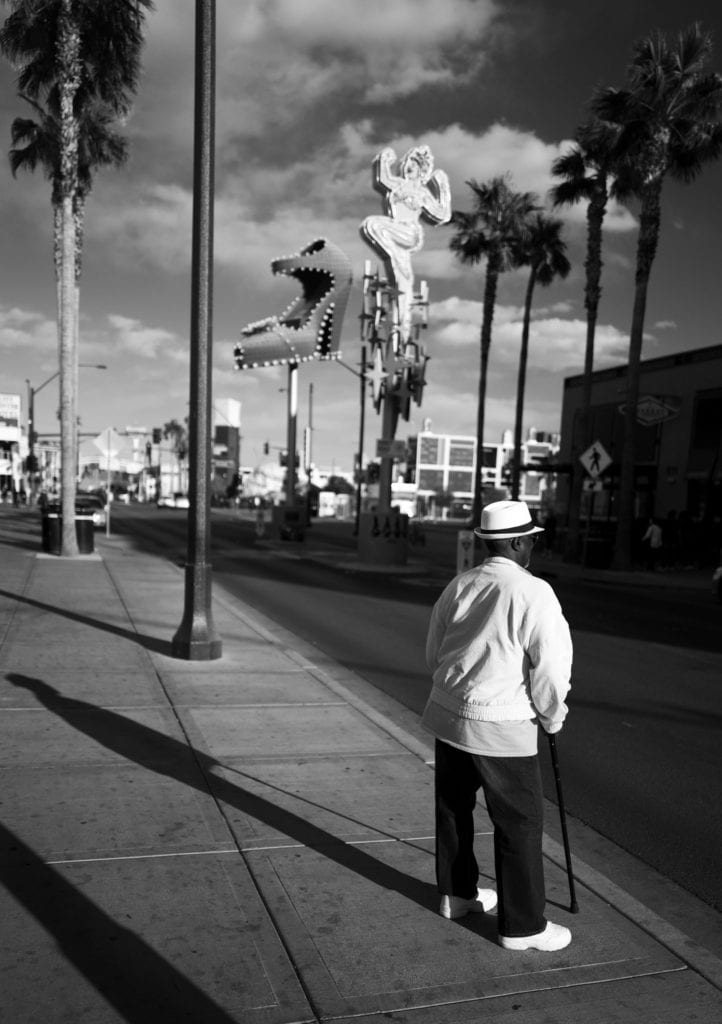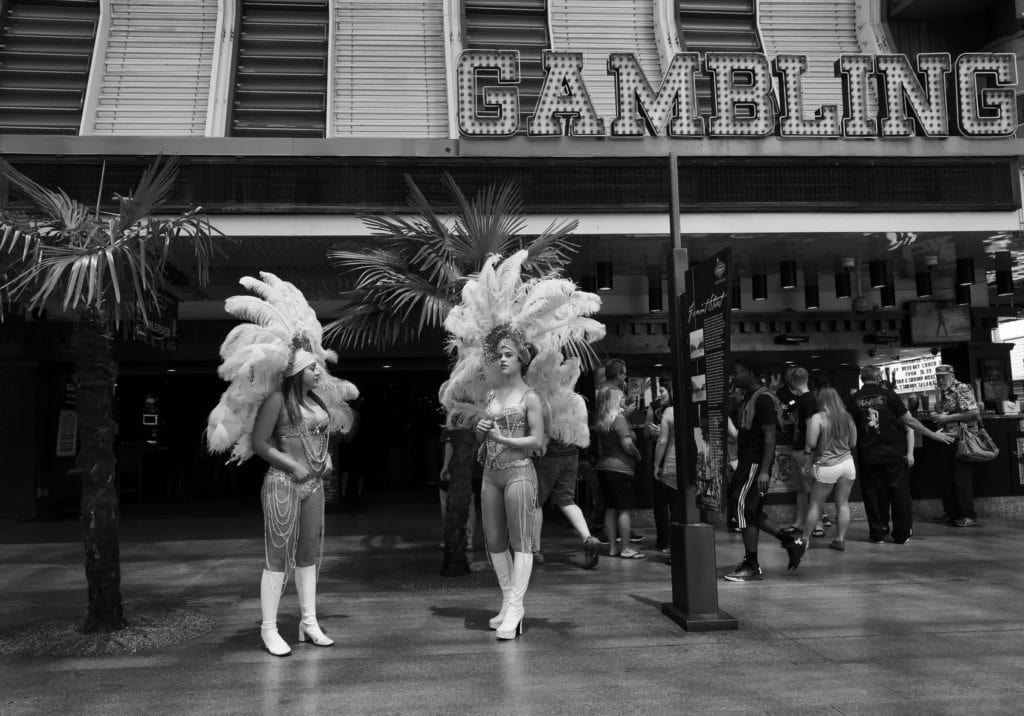
Through the eyes of a lifetime resident
Today’s Las Vegas is very different to how it was in its formative years, when it grew to provide gambling and other adult entertainment to dam construction workers partially funded by Mafia investment. The influence of organised crime in the city lasted well into the 1980’s so it’s still relatively easy to meet people who remember the days when the mob ran the city.
On my last trip I met a couple of them – a barman and a taxi driver. The taxi driver had a business card that described him as ‘driver and lifetime Las Vegas resident’. He described how he and his mother had both worked for mob-run casinos and lamented the decline in standards and increases in petty crime in the city since the mob had lost control. Back in the day, he maintained, the city was cleaner, safer and generally a better place to live.
After asking a few questions, this apparently utopian picture unravelled into a much darker reality. He admitted that now and again those living on the edge of the city might find find a human body part “sometimes a femur, sometimes a skull” brought home from a desert burial by their pet dog. I was horrified by this and commented that, to me, that was too a high price to pay for a tidier looking city! Unsurprisingly he was unmoved and adamant that those deaths were not a real issue. His argument was that ‘everyone’ knew that if you were stupid enough to steal from the mafia you would be killed, and only those that did so ended up in shallow graves in the desert. I remained unconvinced, but it was really interesting to meet someone who had seen Las Vegas in its mob days, and to be misty-eyed about a past many consider awful.
Before we parted, he told me about the mob museum (Formally know as ‘The National Museum of Organized Crime and Law Enforcement’ which is well worth a visit and also has an excellent blog.
A .38 revolver, a wad of hundreds and a small bag of white powder
Curiously enough on the same trip I also met a barman, who I’ll call Michael, with even more direct experience of the same era. He told me a couple of stories about legendary mobster Anthony Spilotro, who was portrayed in the Martin Scorsese movie Casino as Nicky Santoro and played with terrifying menace by Joe Pesci.
Michael was sitting next to Tony Spilotro on the other side of the bar where he was working as he was off-duty. There had been talk in the city about a serious falling out between Spilotro and his fellow mobsters, and to avoid getting caught up in potentially lethal action, Michael slid down a couple of bar stools saying ‘I hope you don’t mind Tony, I just don’t want to catch a bullet’. Spilotro laughed, but two days later he was dead and buried in a cornfield. In the movie he was buried still breathing, but that is unlikely; later mob testimony revealed he was beaten to death in a basement and moved to the burial site afterwards.
On another occasion Michael was asked to retrieve and return Tony Spilotro’s wife’s purse (or handbag in British English) from the bar he was working in, which is where she had left it. He couldn’t resist taking a peek at the contents. Inside the handbag was a .38 snub nose revolver, a huge wad of hundred dollar bills and a small bag of white powder…
Spilotro’s story is an interesting one: he came into contact with organised crime at an early age as his parents ran a Chicago restaurant that was adopted by the mob. He became a “made” man in the 1960s and was sent to act as the mob representative in Las Vegas in the 1970s. He founded a burglary operation, known as the Hole in the Wall Gang with his brother; it was their unsubtle entry methods that earned them the gang nickname. Unfortunately for Spilotro this overtly criminal behaviour led to him being blacklisted by the casinos, which compromised his official mob representative role. This did not sit well with his bosses and associates. In January 1986, at a high level mob the problem of Spilotro and Las Vegas was debated and the agreed conclusion was to ‘hit him’.
Downtown Las Vegas
On that trip I spent most of my spare time in Old (Downtown) Las Vegas, which for me is by far the most interesting part of the city; it is full of characters and rather gritty in comparison to the glitzy experience of The Strip, which personally I don’t care for much.
You can find the pictures from this and my other trips at the Las Vegas gallery on this site. There is also an earlier blog on Las Vegas. The accompanying picture for this post was shot with my Leica Q at f1.8, 1/5000 of a second with -0.6 EV, using the electronic shutter. The leaf shutter on the Leica Q is virtually silent and will go to 1/2000s after which the electronic shutter takes over on the way to a maximum 1/16000s – making the Leica’s fast aperture usable even in bright conditions.
What I like about this shot is the strong full-length shadow, the inclusion of the big Fremont street neon signs in the background and the gentleman’s white jacket, hat and shoes which contrasts nicely with the dark tones that dominate the shot. The Leica Q’s incredible sharpness on the subject compared to the background helps make that contrast even stronger.
 Origins
Origins